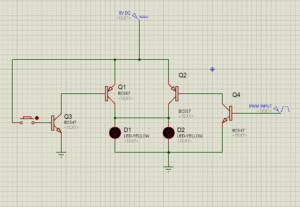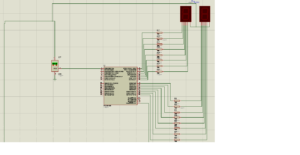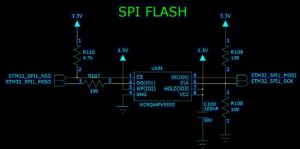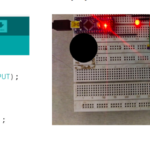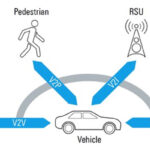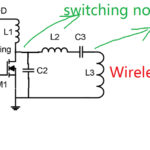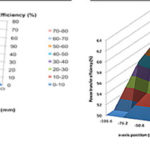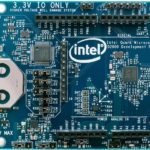(editor’s note: Intrigued by the problem? Have a question or another solution? Then click the “Read more” link and follow the conversation on EDAboard.com or log in to EDAboard and participate in the microcontroller forum thread.)
AC> DC> AC converter: has anyone done this? – I am planning to make an AC to DC and DC to AC (AC-DC-AC) constant voltage stabilizer for a refrigerator. It will take 230V AC input and convert it to 325V DC using bridge and reservoir capacitor. This will then be used as a VBUS voltage to DC-AC converter using 4 MOSFETs. Of, course there will be parallel MOSFETs. Output will be 230V constant AC 20A type. The stabilizer can be used for multiple devices. PIC18F will be used for the project. Read more
LED control difference – I used two PNP transistor along with NPN to control the power supply to a LED. On the one hand, power will be given directly to the LED when the PNP transistor is switched on by NPN transistor. On the other hand, I used same switching principle but switching NPN by using PWM to dim and brighten the LED. Is this circuit correct or do I have to change anything in this circuit? Read more
How to configure PIC16f676 in mikro C Pro compiler – I am new to PIC programming. I work with simulation but just with hardware, not programming. Can you help me to define the header and configuration? Read more
LCD and PIC not communicating – I connect a PIC16f628A on LCD 16×2 1602A. I use micro c to write the code and PICkit3 to send code. After I upload the code on PIC, the LCD just stays open and the message does not appear on it. What can I do? Read more
Analog output interfacing with 5 V – I would like to interface the analog output of a 4-20mA industrial distance sensor to a 5V microcontroller. Normally a 250Ω resistor is used to get 1 to 5V measured across the resistor, but at this point, I’m not sure how this would connect to an Arduino. I’m getting about 10V swing (-5V to +5V) but the max resistance allowed in the specifications is <=500Ω. Is there any way to connect analog output to a 5v microcontroller? Read more
Is 6800 MPU HD44780 compliant controller? – I just bought new OLED display which has 6800 and 8080 parallel controllers and I’m trying to control it through mikroC Pro for PIC LCD library. It is connected in 4-bit mode similarly to a LED display, but it does not seem to work properly. Is this display HD44780-compliant? If yes, should it be 6800 or 8080 modes? I even tried to add delays after all lcd_ commands but still it doesn’t work properly. Any idea what might be wrong? Read more
7-degree temperature sensors controlled by LM35 and PIC18f4520 – I want to make a temperature sensor that outputs actual Celsius degree on two, seven-segments with common anode type.
The project flowchart is:
1) ADC input of the temperature (as a voltage) to PORTA.0
2) Math work to convert the digital data into understandable analog (voltage value) and not forgetting numerical multiplication which is specific to LM35DZ. i.e when the temperature is 13 degrees Celsius, and after branching 5VDC to the sensor input terminals, it shows on the DVM 0.13 Volts that means we have to multiply by 100 to get the accurate voltage representing the real temperature.
I have used two 7seg common anode type and connected the segments pins to PORTB and PORTC respectively for the first digit, and the second digit via 220Ω resistor. For power circuits, I have used an LM7805 with 0.33μF between input and GND and 0.1μF between output and GND to feed PIC, LM35DZ, as well as the seven-segment display but it went too hot!! What causes the first 7805 to get that hot, and are there any errors with the circuit? Read more
Stabilizer design help – I am designing a PIC18F46K22-based stabilizer. I read about CVTs (Constant Voltage Transformers) and found that in that the secondary will be saturated and output is not pure sine wave, but instead the peak will be flattened. Hence, I am trying to design my own stabilizer. Cost is not a problem. I want to make a good design. Are my transformer calculations correct? What will be the normal number of primary turns in a stabilizer transformer? Read more
Using SPI Flash with STM32F407VGT6 – I have Winbond W25Q64FVSSIG, an 8-Mbyte SPI flash, connected to STM32F407VGT6, a 32-bit ARM Cortex M4 MCU. I’m using the MCU as a webserver, so I’m planning to use the SPI flash to store the web page content and some data logs. Therefore, I guess I need to apply a FatFs to whole chip, or some of it if possible. The problem is I cannot find a way to initialize the MCUs SPI interface to communicate with the SPI Flash chip. There are some documents and examples on the net, but none of them really helped. Here is how I connected the chip. Is there anyone that can help with the proper initialization and use according to the purpose I explained? Read more
Automatic battery charger help needed – I am designing an automatic battery charger using PIC16F73. I am using a 9-0-9V 5A transformer for it. I will be designing a buck converter. The input voltages to the buck bonverters are as below. The input voltage range to the transformer (230V to 9-0-9V 5A) is 170V to 245V.
230V to 24V (9-0-9V)
N = Vsec/Vpri = 0.0783
Vsec = N * Vpri
Vsec(L) = 0.783 * 170 = 13.311
Vsec(M) = 0.104 * 245 = 19.1835
Vpk(L) = 13.311 * 1.1412 = 18.82
Vpk(M) = 19.1835 * 1.4142 = 27.13
So, my voltages are above 14.4V needed for boost charging and 13.8V used for trickle charging. How should I proceed? Read more
The post Top microcontroller threads on EDAboard.com – December appeared first on Microcontroller Tips.

